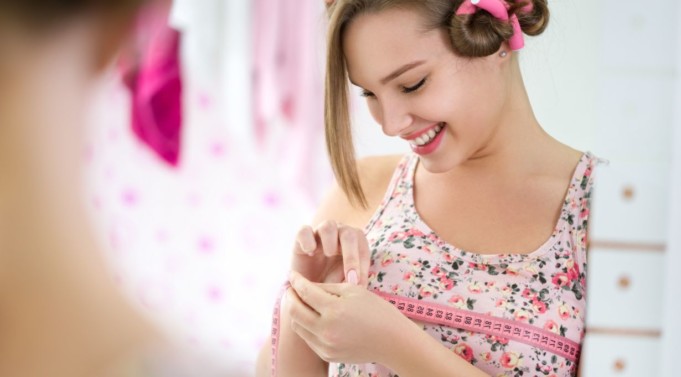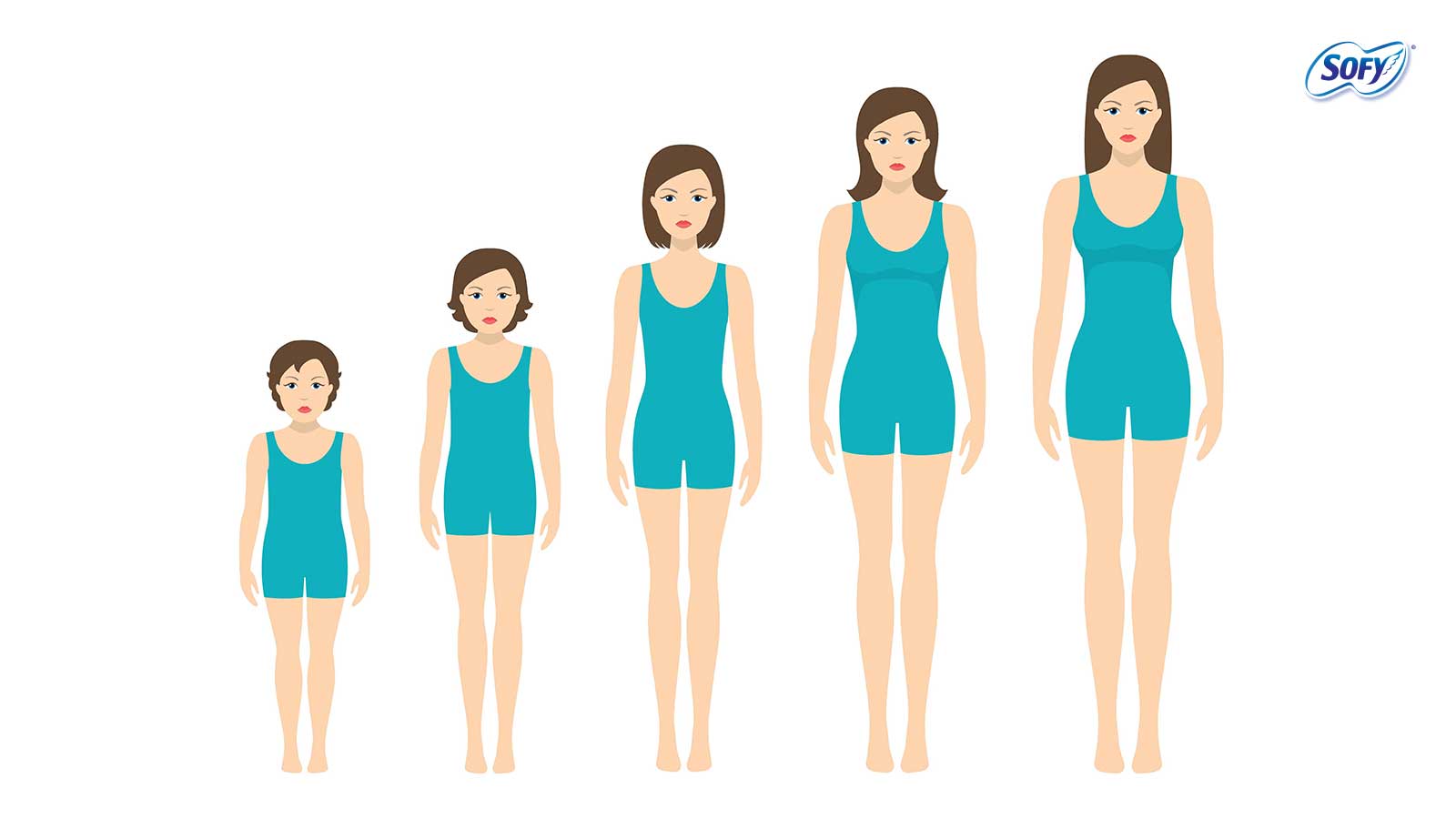Puberty is the process in which the body of a boy or girl undergoes changes that makes them capable of sexual reproduction. The gonads – organs that produce sex specific hormones – receive signals from the brain and initiates the changes.
Puberty brings not only physical changes but also emotional due to the effects of sex hormones. Physical growth includes an increase in height and size of sex organs, production of body hair in pubic regions, and an increase in libido.
Puberty in humans occur during adolescent years (12-19); however, this varies among sexes and even among races. Studies have shown that African-American females are more likely to experience menstruation earlier than their white counterparts.
Also, puberty in girls usually begins in girls at 10-11 and ends around 15-17, while in boys it starts around 11-12 and ends at 15-18.
The most important indicator of puberty in females is the menarche which is the first menstrual bleeding. This usually occurs at age 12-13, although there have been girls recorded to be as young as 8.
In response to signals from the brain, the ovaries and the testes produce a wide range of hormones that initiates change in the body.
In boys, the hormone testosterone is the most important sex hormone. It is responsible for changes in body size, sex organs, growth spurt, and other sex characteristics.
Estrogen is the primary sex hormone in girls, and it is responsible for the development and functioning of the reproductive organs and other sex characteristics.
Precocious Puberty
Precocious puberty occurs when there is an onset of puberty earlier than average age. When puberty starts before 8 for girls and before 9 for boys, it is known as precocious puberty.
Symptoms include;
- Breast growth and first period in girls
- Enlarged testicles and penis, facial hair and deepening voice in boys
- Pubic or underarm hair
- Rapid growth
- Acne and adult body odor
Stages of Puberty
- Adrenarche: This is the early stage of sexual maturity in humans; it peaks around the ages 10-14. This stage is characterized by body odor, acne, and skin oiliness in both mails and females.
- Pubarche: This refers to the first appearance of hair around the genitals and under the arms.
- Thelarche: This is the development of breast tissue in females. It is caused by the action of the female hormone, estrogen, on the breast tissue.
- Menarche: The first menstrual bleeding in girls.
Tanner Scale
For anyone experiencing puberty, the most noticeable physical change occurs in the reproductive organs. The Tanner Scale or Tanner Stages is a scale used to measure physical development in children and adolescent.
It was established after a paper published by Dr. W.A. Marshall and Dr. J.M. Tanner in 1970 detailing a series of predictable physical changes in adolescence.
Tanner Scale in Males
- Tanner I: Preadolescent penis
- Tanner II: Enlargement of testicles and thinning of the scrotal sac.
- Tanner III: Enlargement of the penis and continued increase in the size of testicles.
- Tanner IV: Further testicular and penile enlargement and appearance of pubic hair.
- Tanner V: Adult-sized penis and testicles, distribution of pubic hair.
Tanner Stcale in Females
- Tanner I: Preadolescent breast.
- Tanner II: Development of breast tissue (Thelarche) with the onset of areola enlargement sparse pubic hair.
- Tanner III: Increase in breast tissue volume, enlargement of areola coarser, and curlier pubic hair.
- Tanner IV: Adult breast shape and elevation of the nipple, thickening, and broader distribution of pubic hair.
- Tanner V: Mature adult breast shape and contour, adult pubic hair distribution.
Changes in Males
Increase in size of genitals
The Tanner stages above depict the various changes that occur in males.
Body Shape
At the end of puberty, there is a noticeable increase in body shape. Adult men have denser bones and increased skeletal mass compared to women. There is also a marked increase in shoulder length, chest width, and body height.
The average adult male has about 150% of the lean body mass of an average female and about 50% of the body fat.
Increase in rate of Erections
During puberty, erections are commonplace and occur very frequently. It could occur spontaneously during sleep or at waking hours and can have embarrassing consequences, especially if it happens in public.
Facial and Body Hair
A couple of months or years of the appearance of pubic hair, the body produces androgens that stimulate the growth of facial and body hair. While this does not occur in every man, it is very common.
The areas where hair appears on the male body are under the arms, chest, upper lip, and around the chin (beard area).
There is a large amount of body hair in men compared to women, although, there are women with some amount of facial hair, and this varies among racial groups.
Facial hair does not usually occur until much later after puberty. Some men do not full facial hair for up to 10 years after the completion of puberty.
Chest hair may appear during adolescence or years after, though not all men develop it.
Adam’s Apple and Voice
Under the influence of androgens, the voice box increases in both sexes. This growth is more distinguished in boys, causing the male voice to drop and deepen.
Changes in Females
Body Shape
The breasts start to grow (Thelarche), beginning with a small and sometimes painful lump below the nipple. This is accompanied by the widening of the hips with the waist becoming smaller.
And extra fat developing on the stomach or buttocks. The arms, hands, legs, and feet may grow faster than other parts of the body. All these occur in response to the hormone, estrogen.
Acne and Body Odor
Rising level of hormones changes the composition of sweat which results in a more adult body odor.
This usually precedes breast development and the growth of pubic hair by a year or two. Another effect of hormonal changes is the increased incidence of acne due to rising sebum levels in the skin.
Development of Reproductive Organs and Menstruation
The first menstrual bleeding is known as “Menarche”, this occurs after the development of breast tissue (Thelarche).
Girls usually get their first period between the ages of nine and fourteen. Periods may be sometimes irregular at first but often settle into a pattern after a few months.
It is essential to contact a medical professional if you haven’t started your period by the time you are 16.
Emotional Effects of Puberty
Puberty is accompanied by intense emotional changes, and these are caused by hormones responsible for puberty.
At this stage, it is very common for adolescents to go through mood-swings and intense crushes. Sexual thoughts and urges for the opposite sex, the same sex or both reaches an all time high.
The adolescent may change the way they relate to family, friends, and even the world. Some may become more irritable and moody, preferring their own company or the company of their peers.
Puberty can be very confusing for those going through it. Many teenagers are self-conscious and may experience mood swings, anxiety, and sensitivity. However, not all emotional changes in puberty are associated with dark thoughts.
Puberty can also be a time when a young person learns about their own interests and goals and learns to relate to other people more maturely and responsibly.
While some emotional changes are a normal part of puberty, it is necessary to seek professional help if these emotional changes are unusually severe or affect daily functioning.













